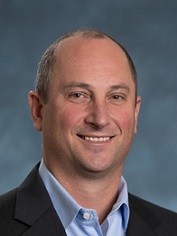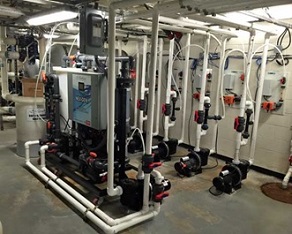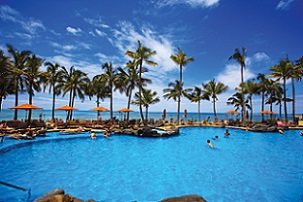
It’s time for the owners of hotels, inns and spas to take a fresher, closer look at saline-based sanitization systems for keeping their pools—whether above ground pool or in ground pool—and Jacuzzis disinfected. Saline-based technology delivers a greener, safer, more cost-effective way to kill algae and bacteria in pool water and destroy chloramines and dirt.
Swimming pool sanitization depends on chlorine, but it doesn’t depend on the use of bulk chlorine. On-site chlorine generators use a mild saline solution to produce free chlorine—or bleach—in a sufficient concentration to meet health and safety requirements. It can be surprising how little chlorine is required in saline pools as long as your salt water chlorinator is good. Saline-generated chlorine should be pH-neutral, with generators having the ability to control the pH of the chlorine at a range of 7-8. Saline chlorination systems use a small amount of saline water—10 percent the concentration of sea water—to accomplish the same result.
Saline-based sanitization systems eliminate the need for bulk chlorine, a highly dangerous, toxic chemical that can cause fires or discharges of dangerous gases when it’s mishandled. Mishandling can occur, for example, when pool personnel—usually a lifeguard or member of the custodial staff—inadvertently mix chlorine with muriatic acid, which is used to balance the pH level of pool water. Improper storage can result in a chlorine gas discharge that could lead to shutting down a pool facility until remedial action is completed.
As an ancillary factor, some municipalities require the construction of separate, special storage facilities to isolate chlorine, and some restrict the hours and sizes of chlorine deliveries. All of this adds to the cost of chlorine. Saline-based sanitization technology eliminates these issues.
On-Site Chlorine Generators

On-site chlorine generators produce pH-neutral liquid chlorine (bleach) from salt stored in a feeder in the pump room. These systems do not require saline levels to be maintained in the pool. Sized according to pool capacity, they work really well if a pool has heavy use or dilution, or if you simply don’t want a saline pool but still want the benefits of producing chlorine on-site.
Skid-mounted systems use pool water, which eliminates the need to connect them to freshwater sources. Once the system is installed, owners can operate their pools as a traditional pool with the only cost being for salt and electricity. In other words, no risk of storing, handling or spilling chlorine. Units are sized based on the number of gallons of water they treat, and one unit can serve multiple pools as long as it can generate enough liquid chlorine.
From an operating-cost perspective, salt is less expensive than chlorine and not subject to the same price volatility or special handling and storage needs. The cost to produce a gallon of bleach is 43 cents, about a one-sixth the cost of chlorine. Saline-based sanitization systems are appealing as an eco-friendlier option and can make your pool a lifestyle asset.
Saline Chlorination Systems
Commercial saline chlorination systems have the capability to produce 2 to 28 pounds of chlorine per day, which means they can sanitize pools ranging in size from 2,500 to 1,000,000 gallons. The size of a saline chlorinator will vary based on the volume of water to be sanitized. The saline concentration is one-tenth that of sea water, approximately 3,500 to 5,000 parts per million (ppm) as opposed to 35,000 ppm.
In operation, a mild saline solution is added to the pool’s water. The saline water then passes through a chlorine-generating cell in a self-contained unit in the pool’s pump room. As low-voltage electricity is applied to the metal plates within the cell, the system produces chlorine, which is pumped back into the pool to kill bacteria, algae and germs. After it kills the contaminants, the chlorine reverts back to a mild saline solution and is recycled through the chlorinator to begin the process again.
Pools with saline chlorinators require monitoring with the same equipment used for chlorine-based systems. Occasionally, salt must be added to replace what is lost to splash-out, overflow and filter back-washing.
Commercial-grade saline systems have components that are capable of operating 24/7/365, which allows these systems to adequately sanitize heavy-use commercial pools. Having toroidal salinity control technology also helps these systems properly monitor and maintain saline concentrations. Low saline concentrations will cause a number of problems for your system, including shorter lifespan on the cells and lower chlorine production. Automatic feeders can monitor and maintain saline levels in your pool at the pre-set concentration you desire.
Enhancing Sanitization

With pool water subject to increased bacteria and foul odors from chloramines cause by swimmers’ sweat and urine, ultraviolet light (UV) systems provide a secondary treatment that can prevent excessive contaminant buildup from an overtaxed chlorination system. Because UV systems work only when water passes in front of them and not continuously on the entire pool, they cannot be used as a standalone measure.
The most advanced UV systems use dual-output lamp technology to meet two needs at the same time. While UV is produced at 254nm, ozone is also produced at 185nm, adding to the sanitization of the water flowing through the chamber. This additional sanitizer helps reduce the amount of chlorine a pool requires. System sizes are based on the flow of gallons per minute past the light, and they can be slightly oversized if desired to ensure effective chloramine containment.
Hoteliers considering a move to a saline-based sanitization should be aware that the cost of the equipment may be slightly higher, but that should be offset by the lower costs for the raw material and for transportation and storage.
When it comes to swimmer comfort, saline-based systems are “addition by subtraction.” In addition to eliminating the environmental, safety, and cost issues of chlorine, they give pool water a softer, cleaner feel without chlorine’s burning feeling on skin and in eyes. They also eliminate a sticky feeling on skin and swim suits.
Steve Pearce is the Co-Founder and Group Executive Vice President of ChlorKing, Inc. and oversees all business activities. He has over 16 years of experience with on-site chlorine generation and commercial water treatment and has been directly involved in the U.S. commercial swimming pool market since 2000. Steve serves on a number of committees and is actively involved on behalf of ChlorKing with NSF (National Sanitization Foundation), which is responsible for codes and policies directly related to the commercial swimming pool industry. Call (800) 536-8180 or e-mail info@chlorking.com.





